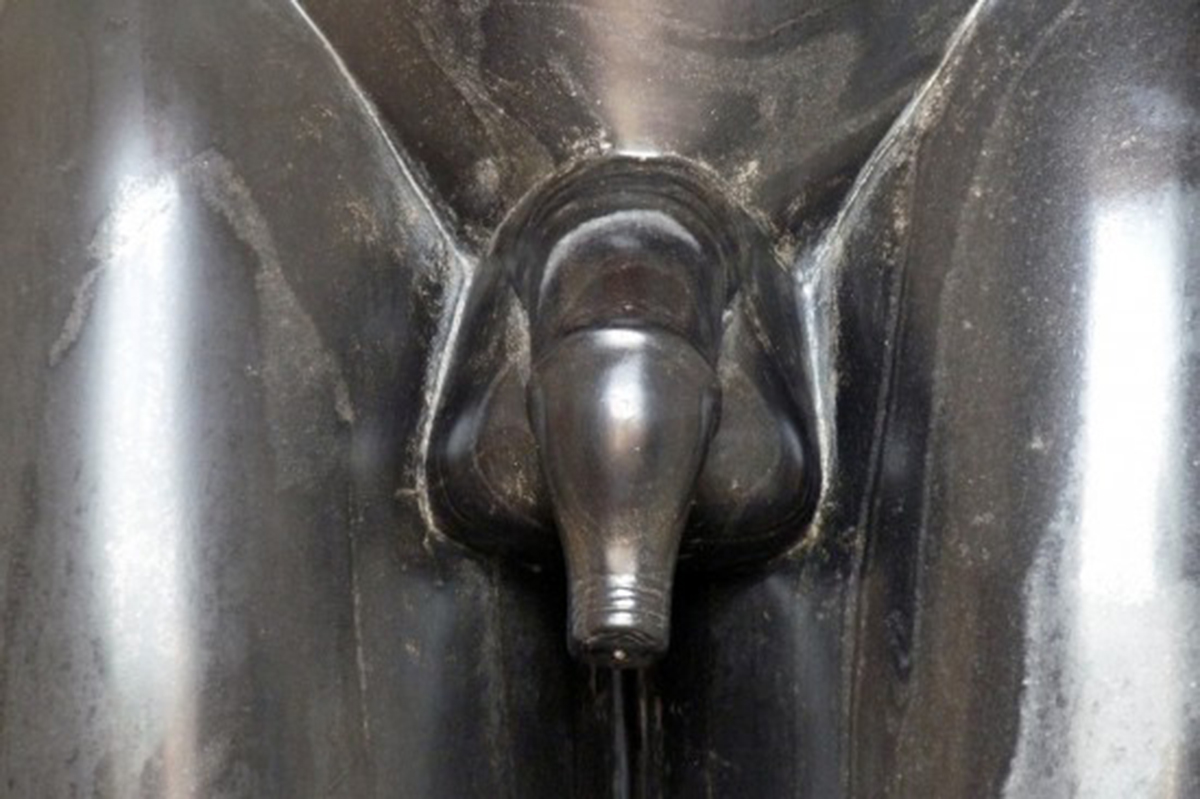Table of Contents
A variety of causes can produce a persistent drip from the penis, but the vast majority of penile discharges are the result of sexually transmitted diseases.
The two most common STDs that cause penile discharge are gonorrhea and chlamydia and they both have similar signs.
The discharge may appear as soon as 2 to 5 days after having sex with an infected partner, or it could take as long as 14 days.
Another common cause is an infection or irritation of the urethra, a disease known as nonspecific urethritis. An infection or inflammation of the prostate called prostatitis may also prompt penile discharge. [3,4]

Conditions that produce some penile discharge can be divided into two big groups:
- Gonococcal
- Non-gonococcal
Gonococcal Urethritis (Gonorrhea)
This sexually transmitted disease is caused by a bacterium called Neisseria gonorrhoeae. The incubation period usually lasts two to five days. The most common symptoms of this type of urethritis include purulent (pus-containing) discharge which peaks within two weeks. Discharge occurs in 95 percent of men and it is [4]:
- Purulent in 75 percent,
- White or cloudy in 10 percent and
- Clear in 5 percent
It can be easily transmitted by sexual intercourse, or other sexual activity, including oral sex. Because this condition can be spread by oral, anal, and vaginal sex, it is very difficult to prevent it just by using condoms.
If gonorrhea is left untreated, it causes further complications. The infection can spread up the urethra to the epididymis and sometimes even cause infertility.
Non-Gonococcal Or Non-Specific Urethritis
Non-specific urethritis is the most common form of penile discharge. Researchers have come to the conclusion that men between 20 and 35 years of age are most commonly affected. Several different organisms can cause non-specific urethritis [5]:
- Chlamydia trachomatis
- Mycoplasma genitalium
- Ureaplasma urealyticum
- Trichomonas vaginalis
- Herpes simplex
Chlamydia trachomatis
A bacterium called Chlamydia trachomatis causes this condition. The symptoms of Chlamydia are painful urination and watery discharge. Diagnosis is easy and it includes [3]:
- Inclusion bodies in Giemsa stain.
- Obligate intracellular bacteria.
- PCR
It is important to know that the patient may also be asymptomatic (show no symptoms) which represents an epidemiological threat. Therefore, if you suspect you might have (had) intercourse with a Chlamydia trachomatis infected person, get tested.
Ureaplasma urealyticum
Ureaplasma urealyticum is an organism that causes a sexually transmitted disease characterized by painful urination and purulent discharge. Ureaplasma urealyticum causes approximately 20% of cases of non-gonococcal urethritis. It can produce urease unlike other Mycoplasmas.[6]
Genital Herpes
Genital herpes is a viral infection that causes periodic outbreaks of painful sores around the genitals. It is caused by the Herpes simplex virus which exists as two different viral types, HSV-1 and HSV-2.
- HSV-1 is the virus that causes cold sores.
- HSV-2 is the virus that causes genital herpes, although you can be infected with HSV-1 and have sores in your genital area.
Genital herpes can be spread even when using a condom, because the lesions can form in areas the condom does not cover. It is also possible to transmit herpes even when you do not have visible lesions. Since herpes is a viral condition, there is no cure for it. Antiviral medicines can be taken to reduce the number and severity of outbreaks and lessen the chance of asymptomatic viral shedding.
The only possible ways of prevention are limiting the number of sex partners and use of condoms. Anyone who thinks they may be infected should avoid any sexual contact and contact an STD clinic. [7]
Trichomonas Vaginalis
Trichomoniasis is a common sexually transmitted disease caused by a tiny parasite called Trichomonas Vaginalis, also known as trich. It mostly infects the vagina, but occasionally it may infect the urethra in men. It is proven that using condoms correctly lowers the risk of catching trichomoniasis.[8]
On very rare occasions, this parasite can be spread by sharing moist towels, washcloths and hot baths. What are the symptoms of trichomonas vaginalis?
The most common symptoms in men include:
- Penile discharge.
- Pain when passing urine.
But infection with trich can also be asymptomatic.
How is trichomonas vaginalis diagnosed? The doctor usually examines the patient’s genital area, and a sample may be taken from the vagina or urethra using a cotton wool swab. Complications with trichomoniasis are rare. If a woman is infected when she gives birth, she may pass it on to the baby.[8]
- Photo courtesy of Steve Browne & John Verkleir by Flickr: www.flickr.com/photos/proxyindian/5169452300

